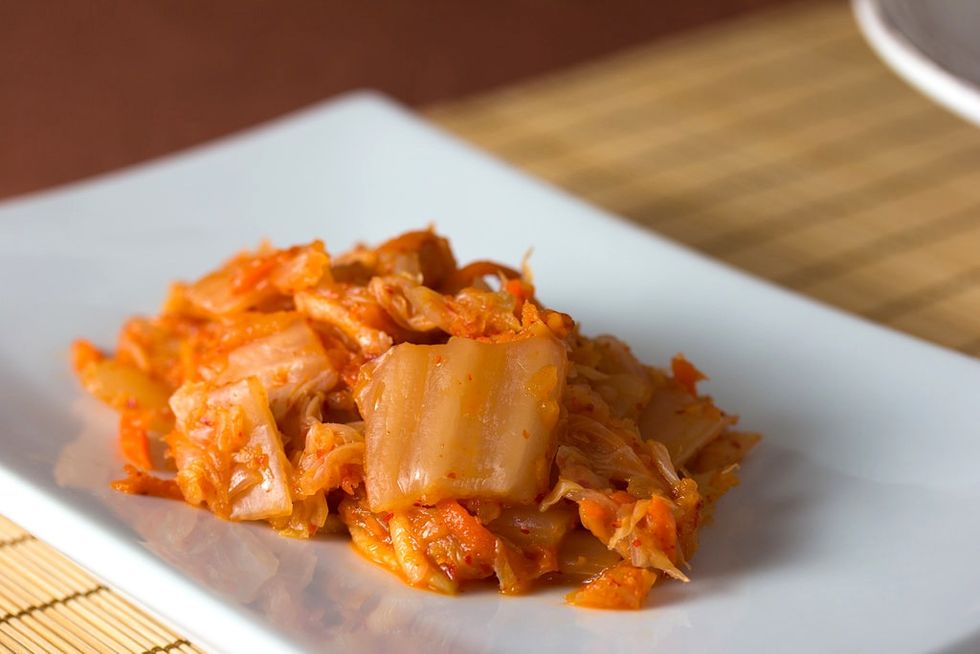
Fermentation is a technique created to preserve food for a long time, enriching them with nutrients and taste.
What do Trentino Alto Adige and Korean cuisine have in common?
170765 The use of fermented cabbage: the familiar sauerkraut and the exotic kimchi, similar specialties obtained through an ancient but valid production method, still valid today, from many points of view.
Fermentation is in fact present in gastronomic cultures all over the world which, since the dawn of time, have used it to preserve food. Thus, from the typical sour cream of Eastern Europe to the spicy South American sauces, there are many preparations that must taste and look at the action of yeast.
170771 It is an ancient knowledge that draws its origins from the need to preserve foods of various kinds at a time when there were not many technological remedies. Even today in some oriental markets we see fermented foods on display and in all cases there is no doubt that fermentation helps the digestion process, not to mention that it is often associated with longevity and that, according to a very recent Swedish study, it would also give solidity to the bones, fighting the physiological fragility of age.
The microorganisms, through the production of enzymes, modify some elements, especially sugars, giving rise to compounds and aromatic substances which, in turn, change the flavor, texture and quality of the food.
In addition to the aforementioned sauerkraut and kimchi (which, unlike our local recipe, is enriched with chilli and spices and, therefore, rather spicy), soy-based fermented products are very popular, especially in Japan. The best known are miso, a savory paste that is used a bit like our cube to flavor soups, and tempeh, fermented and pressed bean loaves which, in vegan cuisine, replace meat. Particular is then the natto, in which the soy beans are wrapped in a stringy paste.
Of course, some of these foods have strong flavors that are not easy to get used to, but they can be added to dishes in small quantities, as a condiment, to dilute the intense taste and begin, however, to take advantage of their numerous properties.
These foods, in fact, are naturally rich in probiotic ferments and act positively on the balance of the intestinal flora, on the immune system and on the assimilability of vitamin complexes. In addition, they provide enzymes, vitamins C, K and group B and have strong antioxidant, purifying, disinfectant and digestive properties.
Make them at home
As we said, fermentation techniques were born to preserve fresh food for a long time. Thus, it is not difficult to make the simpler versions at home based on crunchy vegetables such as cabbage, turnips, radishes, cauliflower, celery, fennel, cucumbers. The vegetables, perfectly cleaned and thinly sliced, are arranged in layers in a glass or ceramic jar sprinkling them with salt and adding, in some recipes, chilli, herbs, spices, vinegar or lemon juice. Then, they are covered with a weight and with gauze (the air must be able to circulate) and left to ferment, in a cool and dark place (not in the fridge), for a few days: from 3-4 to 2-4 weeks for sauerkraut. Finally, the clean jars are drained and put away, keeping them in the fridge, where they last about a week.
To keep them in the pantry longer, closed jars can be pasteurized, as is done for other preserves, by boiling them for about half an hour.
Fermented vegetables can be used as a side dish, alone or mixed with fresh, raw and cooked vegetables. The more spicy ones are perfect as a sauce for rice and noodles.
Even simpler is the preparation of smetana, a sour cream to use to complete velvety soups and to accompany boiled or steamed vegetables. Mix 250g of fresh cream and 250g of Greek yogurt. Add 1 to 3 teaspoons of lemon juice, cover with a cloth and let it rest at room temperature for 8 hours, stirring occasionally. Transfer to a glass jar and refrigerate for 12 hours before using it: it lasts about 1 week.
Kefir, a sort of fermented milk of Caucasian origin that seems to have been known even by Marco Polo, is almost obligatory.







